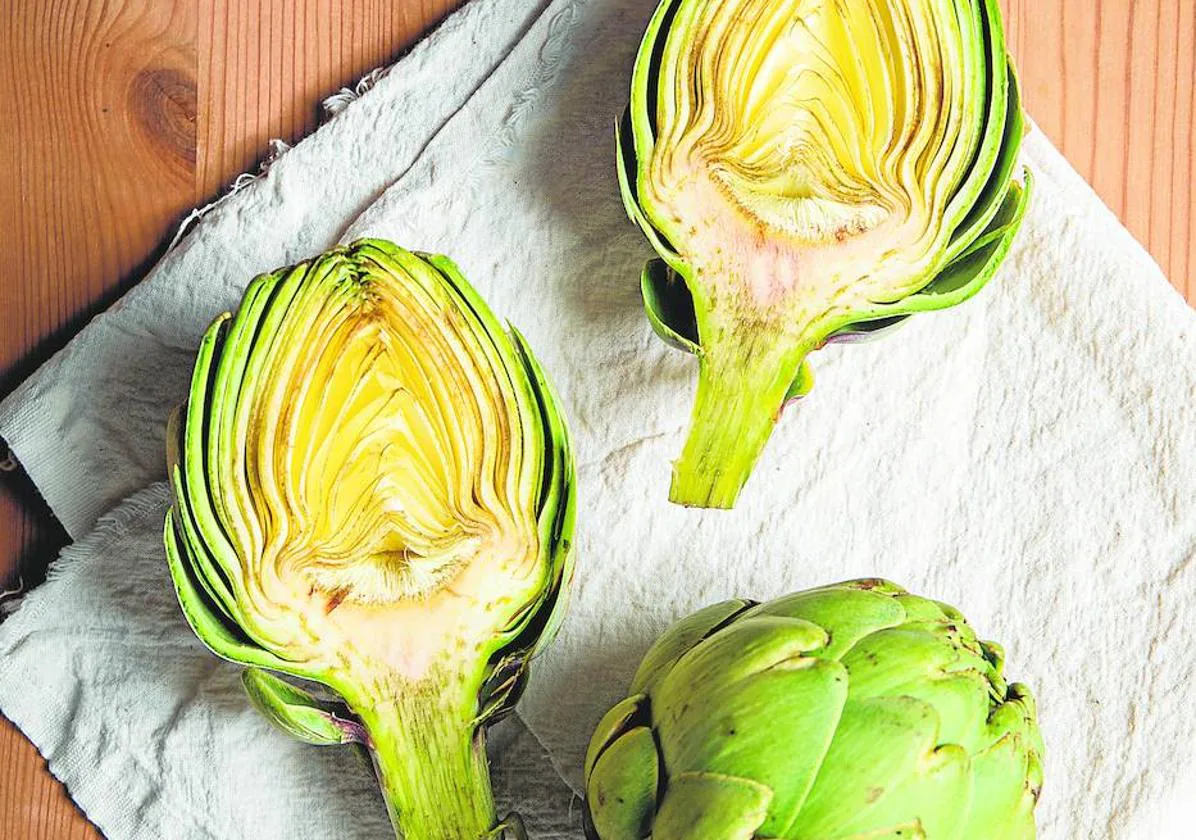Artichokes, a guilt-free pleasure
Light, delicate and elegant, the artichoke is the queen of vegetables. Here is advice on how to cook them and the best drinks to accompany them
Esperanza Peláez
Viernes, 24 de febrero 2023
Light, delicate and elegant, artichokes are the queens of vegetables and, despite the overall rise in food prices, they are still an affordable luxury. Our mothers and grandmothers appreciated their value. «In a simple rice dish or stew, a few artichokes change the flavour completely,» says Paco García, who runs Calma Eladio (https://www.frutaseladio.com/web/calma-eladio/) and supplies local, traditionally-grown artichokes to some of the top restaurants in the province.
He may not be a customer of Calma Eladio, but in Malaga the greatest expert in artichokes is Mariano Ruiz, who says he uses a staggering 50 or 60 kilos a day at his restaurant, Mesón Mariano (C/ Granados, 2, Malaga, tel. 952 21 18 99).
«I have them all year round as long as they are fresh. Right now we have seasonal artichokes from our own province, which I bring from the Guadalhorce valley or La Axarquía, but in March I'll have to look for them in Zafarraya, where they start later because the altitude is higher,» he says.
At Mesón Mariano, the artichokes are prepared in a variety of ways: stir-fried with ham, cut into chips and coated in flour and fried (the favourite recipe of the author of this article), grilled, put into stews, in salads and more.
Like Ruiz, Fernando Villasclaras, chef at El Lago (https://restauranteellago.com/, Marbella, 1 Michelin star) and renowned in the province for his vegetable haute cuisine, says that for artichokes to shine in all their splendour it is essential to cook them at the very last minute.
«At El Lago we go so far as to prepare them during service or just before it starts, depending on how many reservations we have,» he says.
In professional catering, there is a great tendency to confit artichokes but Fernando Villasclaras is not a fan of that technique. «The artichoke is a delicate, aromatic vegetable. If you immerse it in oil you take away part of the power of its natural flavour. For a time chefs used to cook them sous-vide, at a low temperature, but in my case I have returned to the traditional method: we peel and clean the artichokes, submerge them in water with a little lemon and a lot of fresh parsley so they don't go black, cook them for 20 minutes, grill them and then add a few drops of olive oil, the picual variety,» he says.
On the vegetarian tasting menu that Villasclaras has introduced this year, the artichokes are prepared in this way and served on a thick vichyssoise, topped with flakes of black truffle. It is a top-notch vegetable dish. It is also one that Cristina Cánovas and Diego Aguilar make at Palodú (https://www.palodurestaurante.es/). Simplicity is their watchword and they use products of very high quality.
«We clean and cook the artichokes in water, and we also use the stalks. We make a cream with those, and fill the cooked, hollowed-out artichoke heart with a cream of payoyo cheese, topped off with home-preserved lemon,» Cristina says.
Another good version is prepared by Sarmiento restaurant (https://www.restaurantesarmiento.com/) in Casares, which specialises in grills and barbecues. «We cook the artichoke sous-vide just enough so it doesn't go hard and then we grill it. We serve it with a thin slice of pork cheek and some semi-cured payoyo cheese», explains Miguel Hernández, who runs the restaurant with his brother Diego.
The very peak of deliciousness is the artichoke dish currently being served at Benito Gómez's Bardal restaurant in Ronda (https://restaurantebardal.com/ Ronda, two Michelin stars). Gómez uses very tiny artichokes that Paco García makes great efforts to find.
«Above all, we want them to be tender,» he says. «We put them in cold water whole, without cleaning them, and once the water starts to boil we cook them for ten minutes. Then we clean them, roast them in a wood oven and finish with a sabayón of chicken stock, smoked butter, aged sardine and egg yolk,» he explains.
Gómez's cooking method, in which no lemon is used, is a technique used by other chefs who specialise in this vegetable, such as Ricardo Camarena, who is from Valencia.
Fans of artichoke confit will enjoy the version from Alejandro Fernández and Carmen Pozo at La Taberna de Monroy (http://latabernademonroy.com ). «We use a good olive oil, a little salmorejo, a touch of amontillado and Toro Albalá grape syrup,» says Alejandro.
To make the confit at home, you have to clean the artichoke, removing the toughest leaves and the woody part of the stalk and then immerse it in extra virgin olive oil. Over a minimum heat, depending on how tender the artichoke is, it can take approximately an hour. Then you let it get cold and store it.
Fat is a good preservative, so artichoke confit is a common product in the so-called fifth range, in other words the category of ready-to-eat foods which are often used in the restaurant business and can now also be found in the ready-meals section of supermarkets.
«There are companies that specialise in that product, but nothing compares to the quality of a fresh artichoke during the season and it's also important to support local producers,» insists Paco García.
Knowing that García is one of the most outstanding sommeliers in Andalucía and ran El Lago for many years before moving to the countryside, we ask him for some wine recommendations. «Well, you know it's difficult with artichoke,» he says. «Itt clashes head-on with reds and still whites. On the other hand, it always goes well with the Andalusian fortified wines. In Malaga province we have options like the aged dry wines, and the Pajarete which, depending on the other ingredients used in the dish, can be a very good option. Otherwise, a beer is good,» he says. So, now you know. Enjoy!



